Plyometric exercises are explosive bodyweight moves that involve powerful, rapid stretching and contracting of your muscles to boost muscle power.
Plyometric exercises are an amazing way to increase your strength with heart-pumping moves — not to mention, they burn tons of calories. Plyometric exercises are the perfect training method to add into your routine if you’re looking to take your workout up to the next level, and here’s why:
Benefits of Plyometric Exercises
Strengthens fast-twitch muscle fibers
The goal of plyometric exercises is to maximize muscle contraction, quickly, which increases the output of muscle power.
Can you spare 10 minutes a day? Then you can do this 7-Day Paleo Weight Loss Bodyweight Workout Challenge!
Click here to get your FREE copy!
In order to increase your power, you need to increase and strengthen the muscle fibers that are responsible for converting strength into speed. These fibers are referred to as fast-twitch fibers, and plyometric training can strengthen them. The stronger the fast-twitch fiber, the faster the muscle contraction — which leads to increased power.
Increases tendon strength, which can decrease injuries
Power exercise not only strengthens your muscle fibers, but also increases the strength of your tendons. Furthermore, stronger tendons mean fewer injuries. Plyometric exercises can strengthen the tendons and improve their elasticity by placing stress on them in a controlled setting. (1)
Increases athletic performance
With increased power comes increased performance. This makes plyometrics a key training component of many athletic training programs — especially sports requiring explosive movements.
Exercises like box jumps and vertical jumps are perfect training tools for football players who may need to jump to avoid a tackle or for Olympic weightlifters who need power for their squats. Plyometric exercises recruit the same major muscles and joints, and have a similar range of motion as many common movements in other sports.
So now that you know how plyometrics can benefit your training and performance, let’s look of some of the best plyometric exercises to add into your workout routine.
Lower Body
1. Jumping Jacks
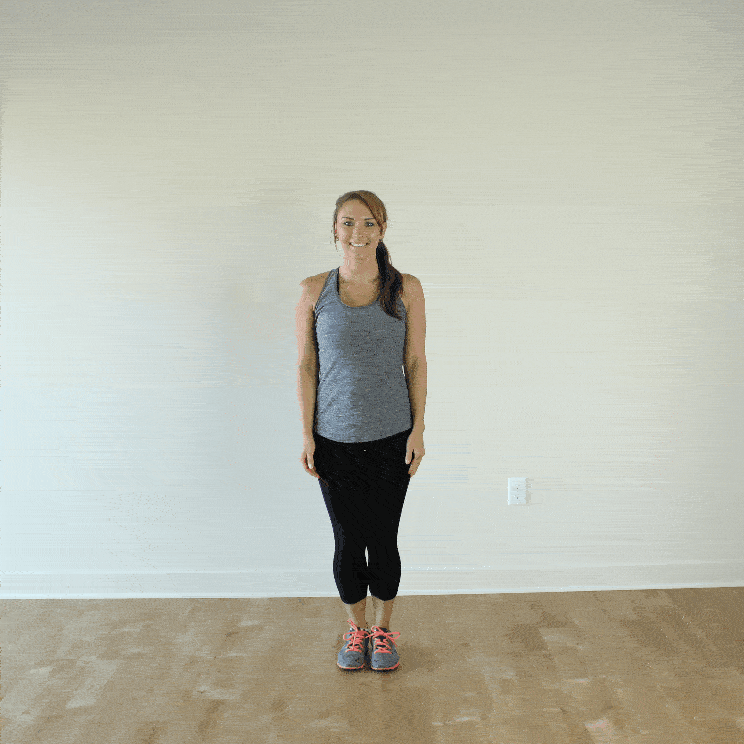
2. High Knees
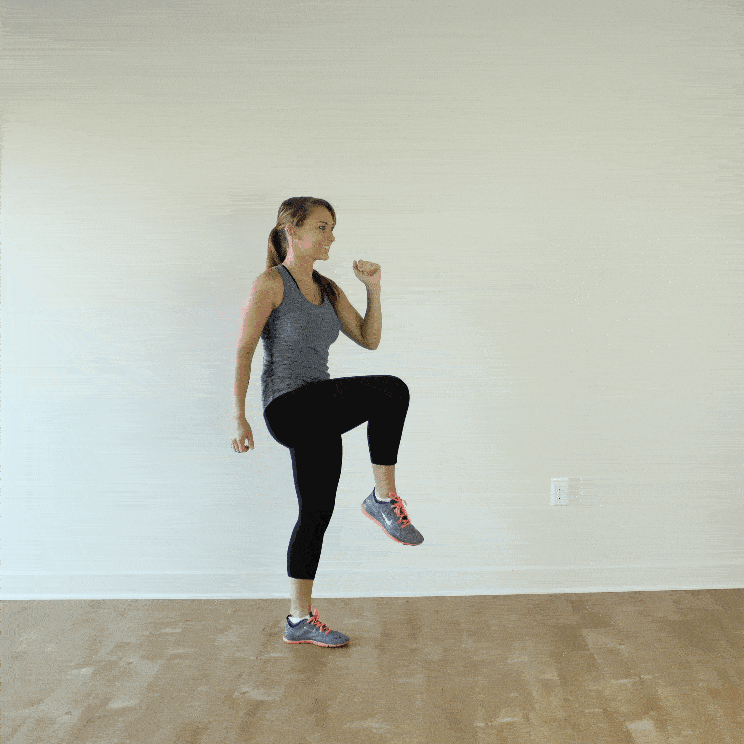
3. Skaters

4. Tuck Jumps
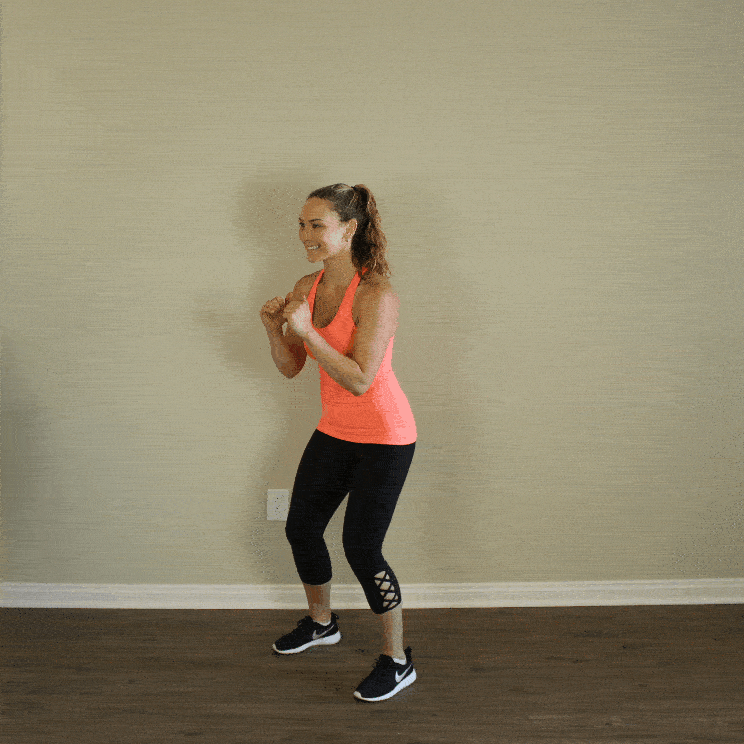
5. Star Jumps
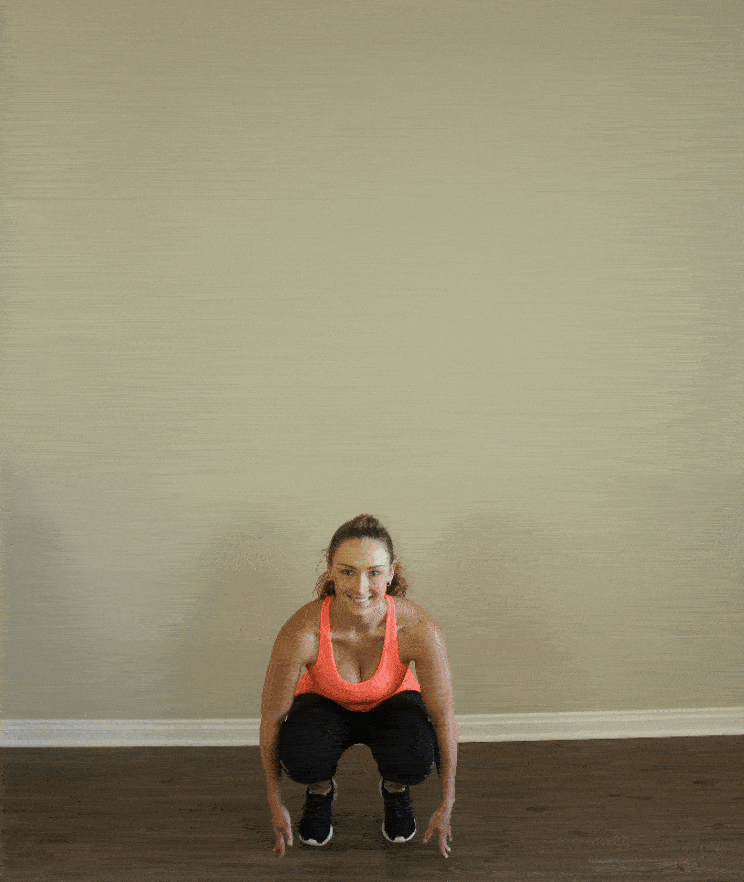
6. Jump Squats
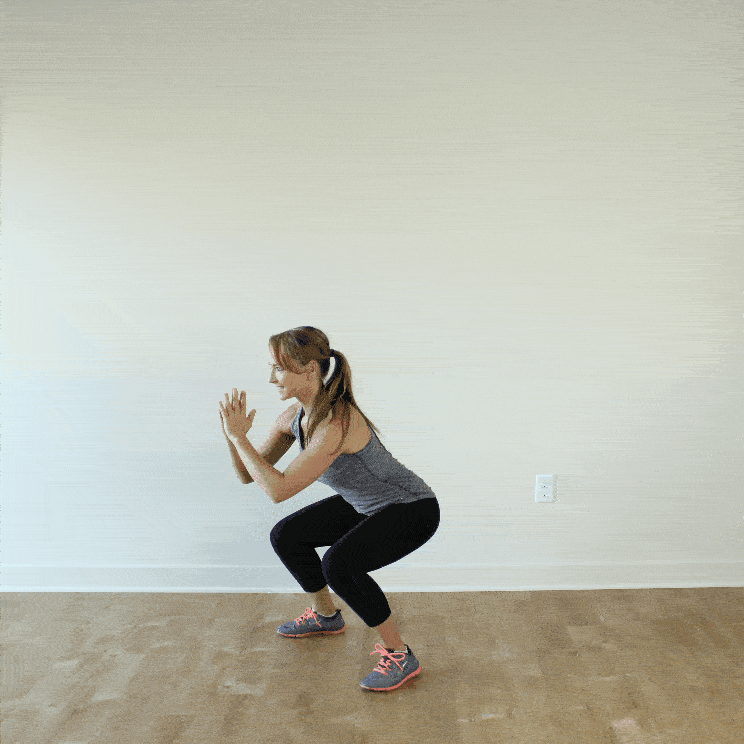
7. 180 Jump Squats
Start just as you did for jump squats, only this time, as you jump, rotate and twist your body to the RIGHT so that you land facing the opposite direction, turning 180 degrees. Be sure to land softly and with your feet and toes facing forward. Repeat twisting and landing to the LEFT (the opposite direction as before). Repeat for 10-20 repetitions, making sure you’re even on both the right and left.
Exercise: 180 Jump Squats
8. Squat Jacks
Start in a lower squat position with your feet together. Staying in a lower position, jump the feet out to about shoulder-width apart. Quickly jump back in. Continue for 20-30 repetitions for 30-60 seconds.
Exercise: Squat Jacks
9. Leap Frog
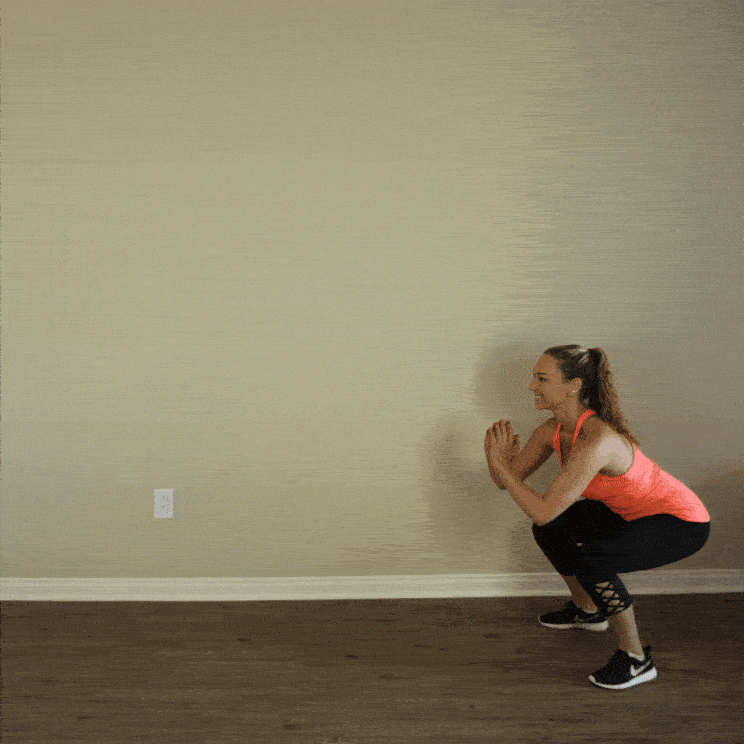
10. ‘Frog’ Jumps or Sumo Jump Squats
Start with your feet slightly wider than shoulder-width apart and your knees and toes turned out. Lower into a deep squat reaching your hands to the floor between your feet. Jump as high as you can and extend your arms overhead. Land softly in the squat, with hands to the floor. Repeat 10-15 times.
Exercise: ‘Frog’ Jumps or Sumo Jump Squats
11. Jump Lunges
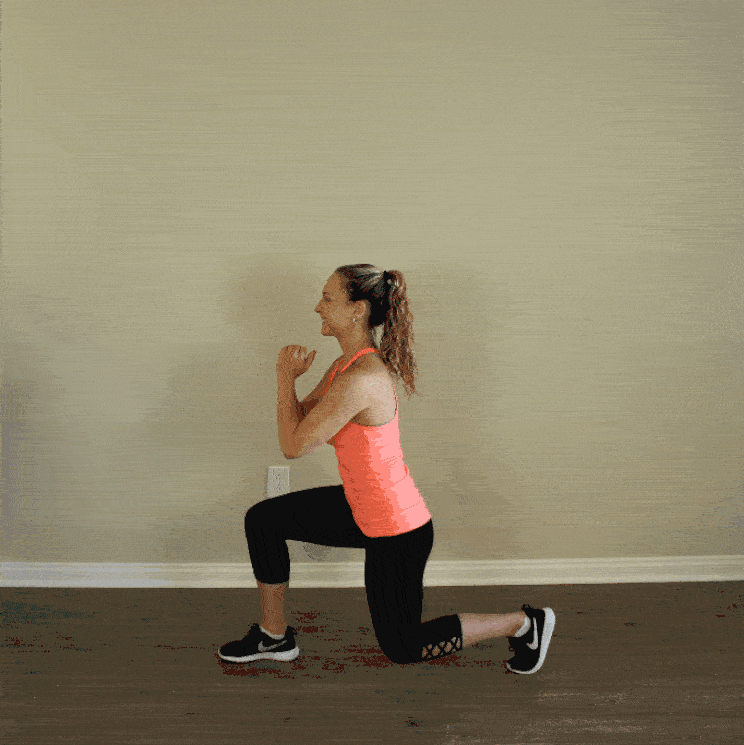
12. Box Jumps
Start by standing next to a box or bench that is sturdy and won’t move at all. (The box can be any height — start with 6 inches and continue to work your way up when you feel ready.) Start by standing about your own foot distance away from the box. Squat down, keeping your weight in your heels. As you power up through the heels and hamstrings, jump up and propel yourself up and forward to land both feet on the box. Either step off carefully or jump back down. Repeat 10-20 times.
Exercise: Box Jumps
13. Burpees

Core
14. Mountain Climbers
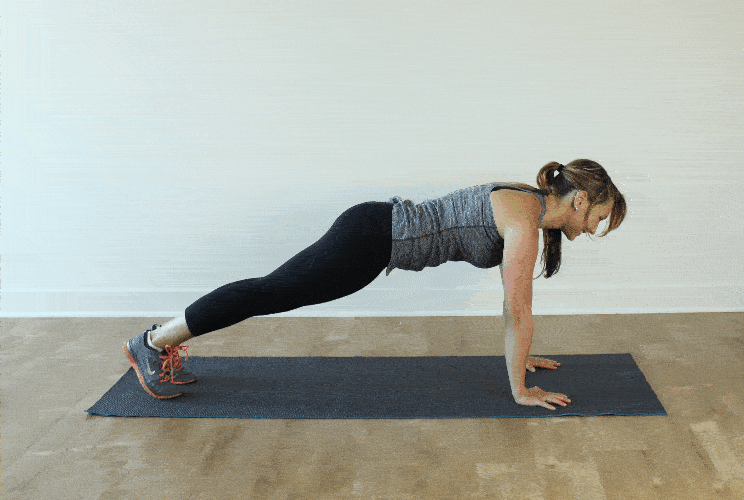
15. Plank Jacks
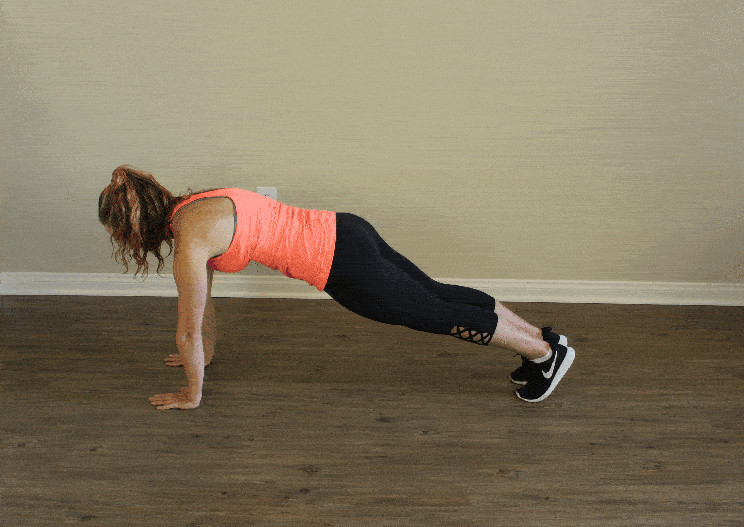
16. Plank Tucks
Start in a plank position with your core nice and tight, and legs out straight behind you. Focusing on your lower abs and quads, jump your knees in towards your chest, landing your feet close by your wrists. Complete 10-20 repetitions.
Exercise: Plank Tucks
17. Side-to-Side Plank Hop
Start in a plank position with your shoulders directly over your hands. Tighten your core and use your lower abs to jump your feet as if you were doing plank tucks, but jump your feet over to the RIGHT, just outside your right shoulder. Jump your feet back to the full plank position, and then quickly jump the feet over to the left. Continue jumping from right to left for 20-30 repetitions total.
Exercise: Side-to-Side Plank Hop
18. Donkey Kicks
Start in a crouching position, with your hands directly under your shoulders and your abs pulled tight. Quickly kick your legs up into the air, bending your knees and bringing your heels towards your glutes. Land softly. Repeat 10 times.
Exercise: Donkey Kicks
Upper Body
19. Push Offs
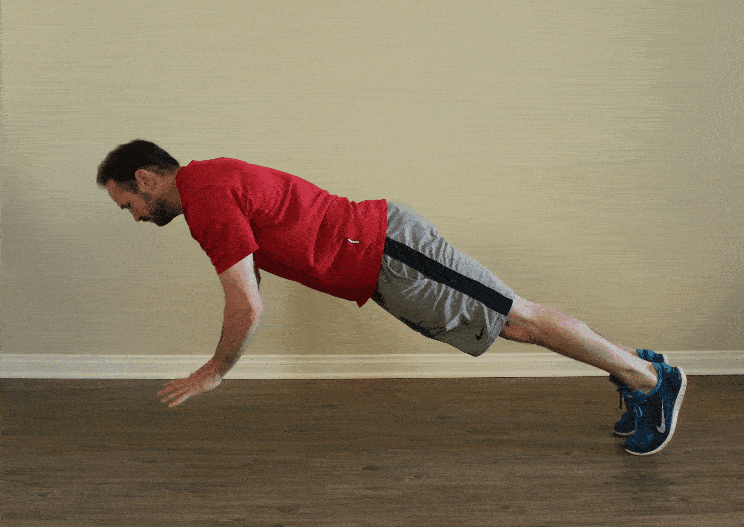
20. Push Up Jacks
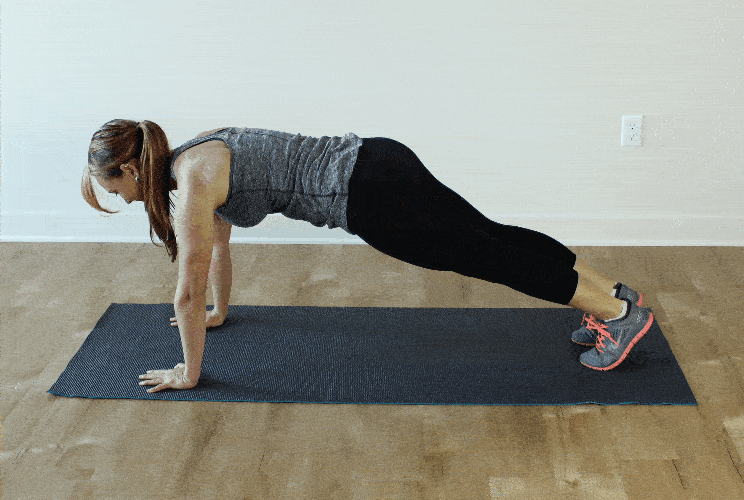
21. Clapping Push Up
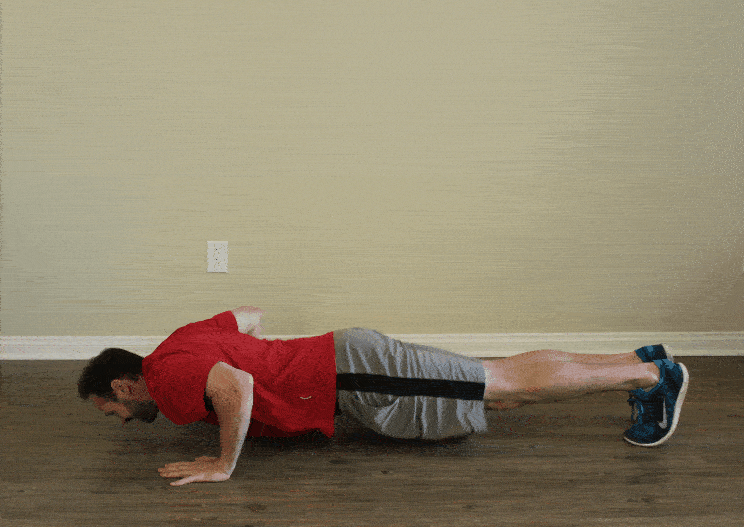
22. Insert Wide to Narrow Push Up
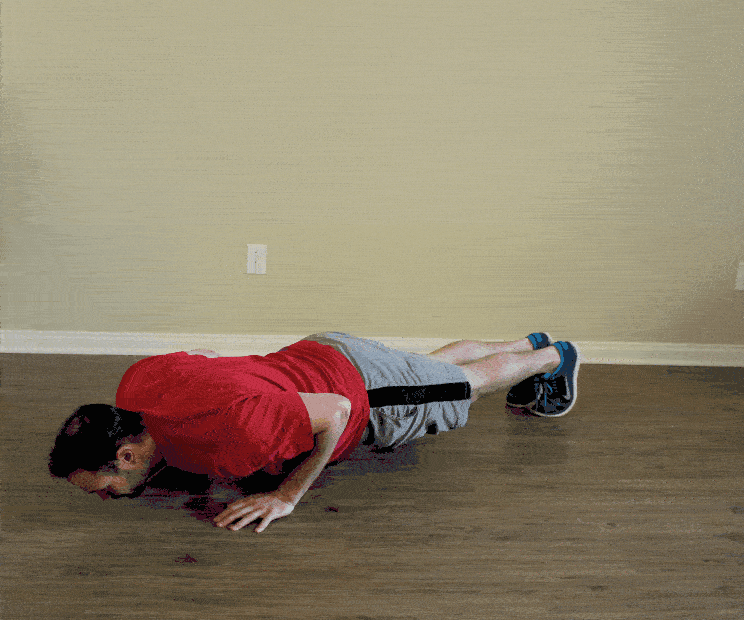
23. Wide to Narrow Pull-Ups
Start in a wide-grip pull-up position with your palms facing away from you. Pull up and power up to quickly move your arms into a narrow-grip pull up. Continue switching from wide to narrow for 10-20 repetitions.
Example: Wide to Narrow Pull-Ups
24. Switch Grip Pull-Ups
Start with a regular pull-up position with your palms facing away from you, about shoulder-width apart or more. As you pull up, power up so that you can quickly “jump” and switch your hands to a narrow pull-up position with the palms facing in towards you. Repeat, this time landing with the palms facing away for one full repetition. Complete 5-10 repetitions total.
Example: Switch Grip Pull-Ups
25. Clapping Pull-Ups
Start with a wide pull-up with your palms facing away from you. As you pull up quickly, clap your hands together before placing your hands in the pull-up position. Complete 5-15 repetitions, depending on your strength.
Exercise: Clapping Pull-Ups
26. Muscle Ups
Start in a wide-grip pull-up position. Powerfully pull yourself up, and at the top of the motion, pivot your wrists and simultaneously bring your shoulders and chest over the bar to straighten your arms and push yourself up above the bar. Lower back down in the exact opposite motion and repeat 10-20 times.
Exercise: Muscle Ups
27. Explosive Tricep Dips
Start with both hands on tricep dip bars and palms facing in. Bend the elbows to lower to 90 degrees. Power through the arms to explode up, “jumping” the hands off the bars a few inches and landing softly, lowering back into the dip. Repeat 10-15 times.
Exercise: Explosive Tricep Dips




 21 Symptoms and Causes of Anemia (and How to Fix It)
21 Symptoms and Causes of Anemia (and How to Fix It)
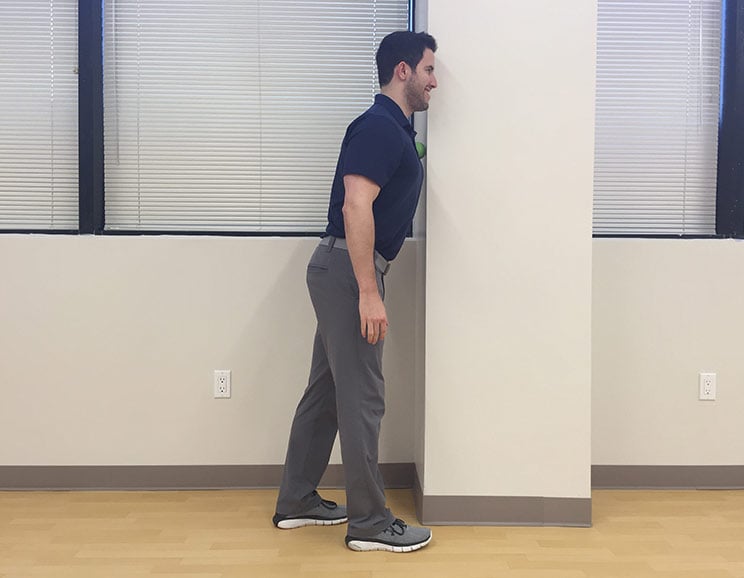
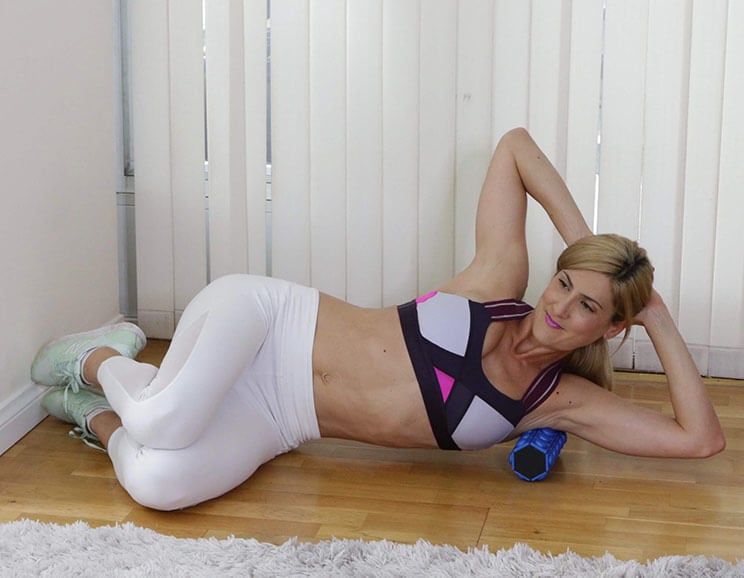
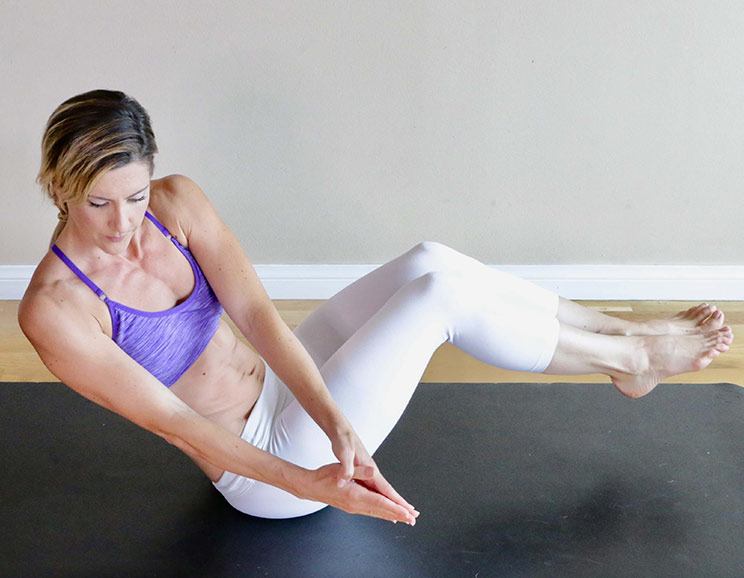
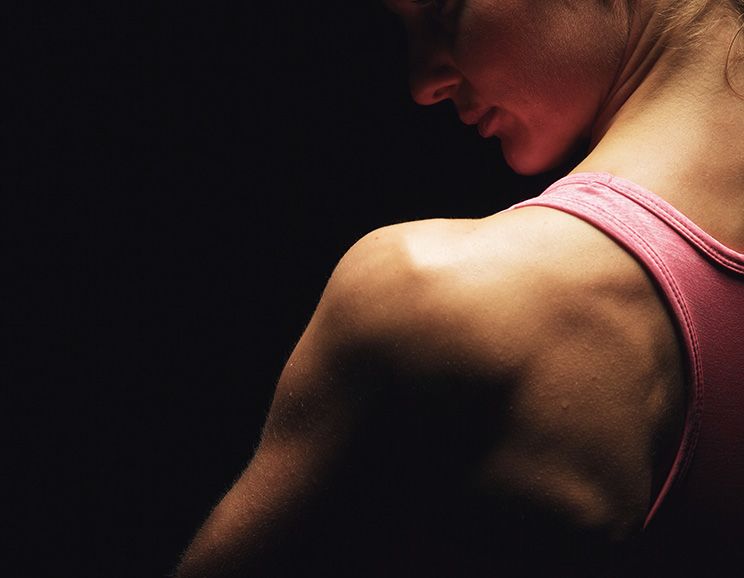
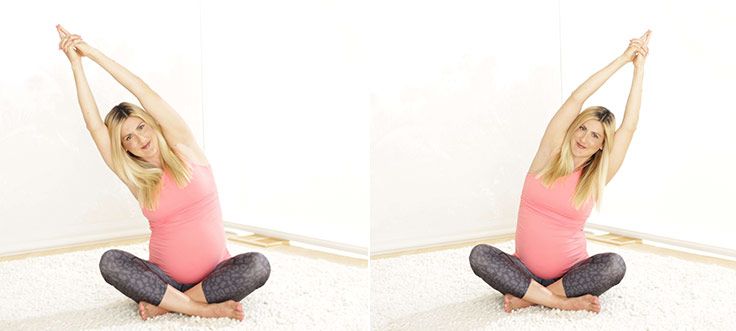
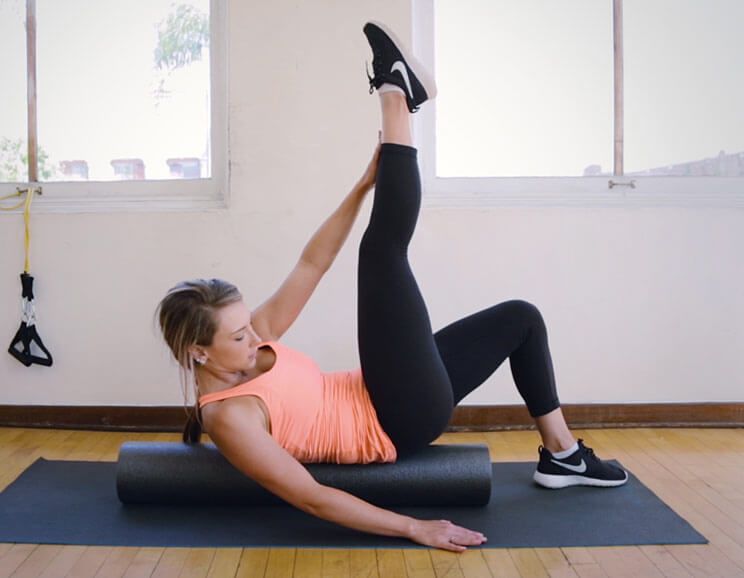

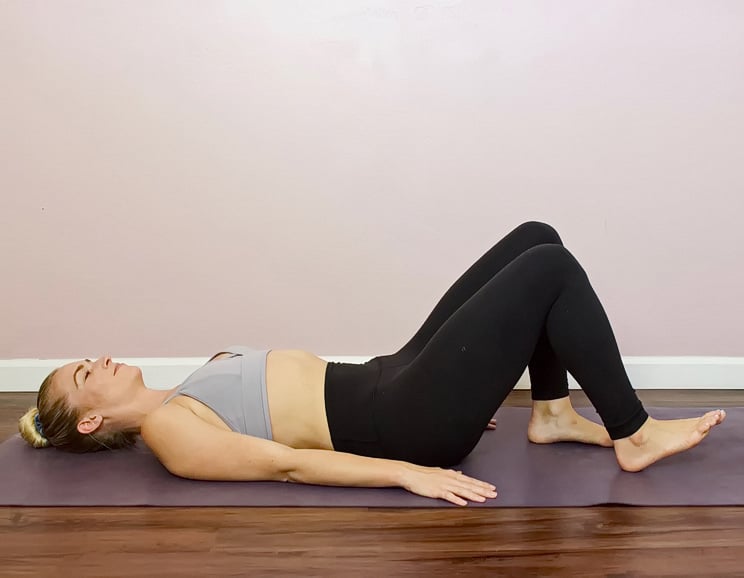

Show Comments